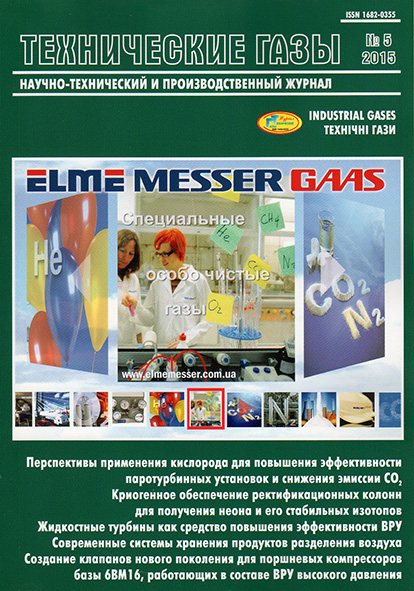LIQUID TURBINES AS A MEANS TO IMPROVE ASU EFFICIENCY
DOI:
https://doi.org/10.18198/j.ind.gases.2015.0795Keywords:
сryogenic equipment, turbo-expander, throttling valve, air-separation unit, degree of reaction, efficiencyAbstract
Two-phase turbo-expanders are used in cryogenic systems. They are used in two main areas: in passing through the right or left boundary lines of air, carbon dioxide, natural and others gases. The work provides information concerning the results of calculation studies of liquid-steam turbo- expanders that can replace throttling valves in the final stages of cooling in cryogenic air separation units (ASU). Structural, thermodynamic and kinematic characteristics of liquid-steam turbo- expanders with degrees of reaction of 0,1 and 0,5 are defined. Characteristics of the ASU with the specified turbo-expanders are studied. It was found that they have the best efficiency in ASUs implementing medium-pressure cycles. We studied three options incorporating turbo-expanders into the scheme of ASU with medium pressure: a basic one using one expander instead of a throttle valve on the flow of liquid air into the lower column; two expanders installed on the flow to the lower column stream and on the flow of the bottom liquid to the upper column. It is shown that it is possible to reduce unit costs by 2,3 % in the ASU when replacing throttle valves by liquid-steam turbo-expanders.
Downloads
Issue
Section
License
LICENSE AGREEMENT
After receiving an article for publication as required revision scientometric databases each author directs the license agreement on the assignment and transfer of the management of copyright. Signatures of the author (s) it is desirable to seal the personnel department of the institution where the author works (authors), or the seal of the Faculty.
Revision refers to the authors one layout for proofreading. Permissible only those fixes that result in compliance with the layout of the original text of the article. Significant changes are not permitted. Layout should be sent to the editorial office within days of receipt.

